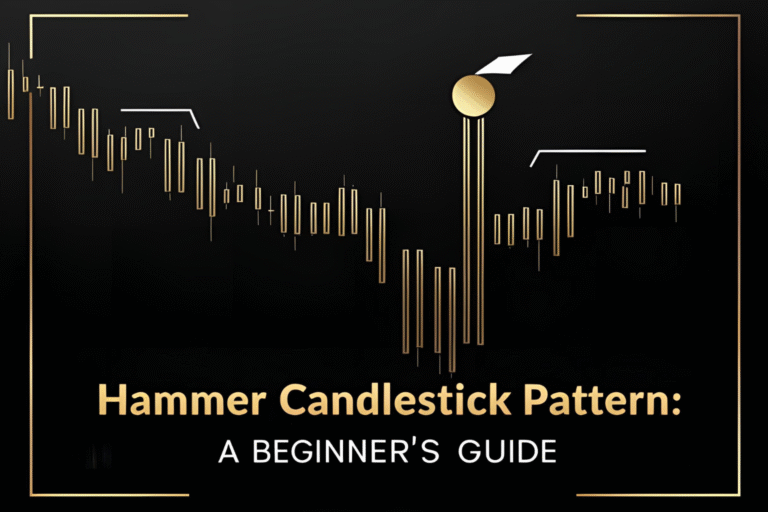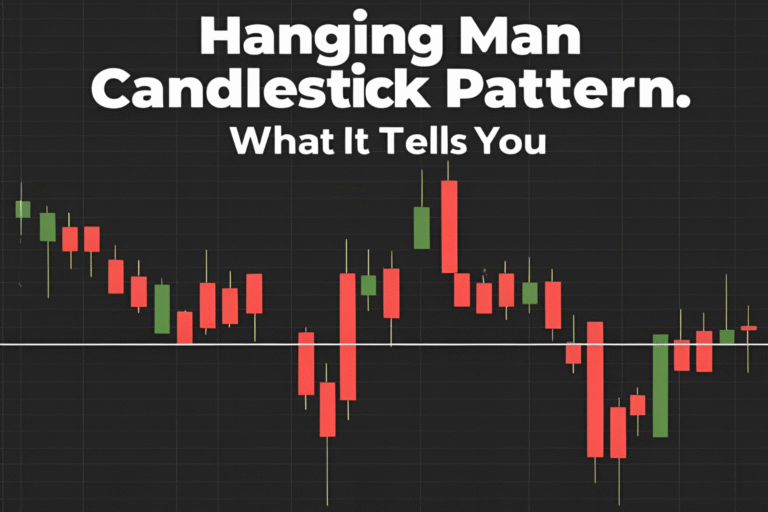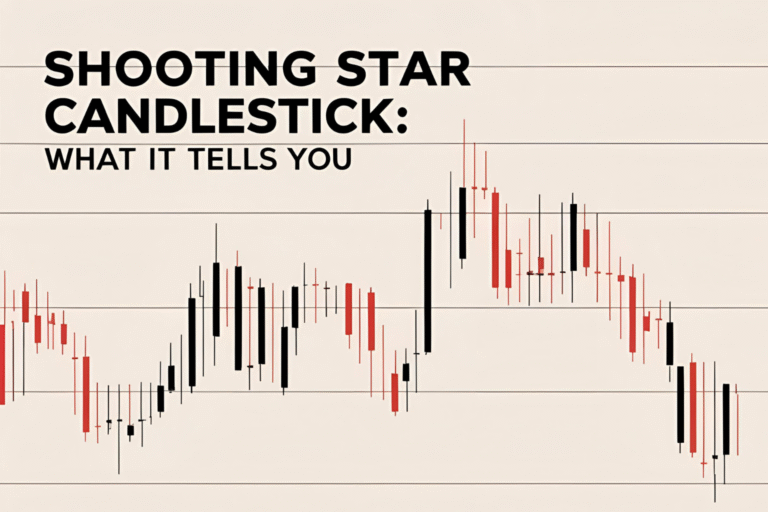The Doji Candlestick: What It Means and How to Trade It
The Doji candlestick is one of the most important patterns in technical analysis. While it looks simple, it carries deep meaning about market indecision—and can signal a powerful turning point. Whether you’re trading stocks, forex, or crypto, learning to identify and trade Doji patterns can give you an edge.
In this guide, we’ll explain what the Doji candlestick means, how to spot it, and how to trade it like a pro.
What Is a Doji Candlestick?
A Doji candlestick forms when the open and close prices are nearly equal, resulting in a very small or non-existent real body. It looks like a cross, plus sign, or inverted “T” and often comes with upper and lower wicks.
Key characteristics:
- Open ≈ Close
- Wicks can be long, short, or uneven
- Signals indecision between buyers and sellers
What the Doji Tells You
The Doji reflects market hesitation—neither bulls nor bears have full control. Depending on the context, it can signal:
- A pause in the current trend
- A possible reversal (especially after strong trends)
- The need for confirmation from the next candle
Types of Doji Patterns
There are several variations of the Doji, each with slightly different implications:
1. Standard Doji
- Open = Close; small body with wicks
- Neutral signal
- Wait for the next candle for confirmation
2. Long-Legged Doji
- Long upper and lower wicks
- High market indecision
- Often forms near tops or bottoms
3. Dragonfly Doji
- Long lower wick, no upper wick
- Bullish potential if found at support
- Looks like a hammer-shaped Doji
4. Gravestone Doji
- Long upper wick, no lower wick
- Bearish potential if found at resistance
- Looks like an inverted hammer
How to Trade the Doji Candlestick
The Doji is not a signal to trade on its own. It requires context and confirmation.
Step-by-step strategy:
- Identify trend direction
- A Doji after a strong uptrend may signal a bearish reversal
- A Doji after a downtrend may signal a bullish reversal
- Look for support or resistance zones
- The Doji is more powerful near key price levels
- Wait for confirmation
- A bullish or bearish candle closing after the Doji gives the signal to enter
- Set stop-loss and take-profit
- Place stop-loss beyond the wick of the Doji
- Target the next support/resistance level or use a fixed risk/reward ratio
Example: Dragonfly Doji on a Stock Chart
You’re watching a stock in a downtrend. It reaches a known support level and forms a Dragonfly Doji. The next candle closes bullish and breaks a short-term trendline.
- Entry: After confirmation candle closes
- Stop-loss: Below the Doji wick
- Take-profit: At the next resistance level
This is a high-probability setup when backed by volume and market structure.
Common Mistakes to Avoid
- Trading the Doji in isolation
- Ignoring the trend
- Entering before the next candle confirms direction
- Misreading spinning tops as Doji (spinning tops have small but visible bodies)
FAQs
What does a Doji candlestick mean?
It shows indecision in the market, where buyers and sellers are evenly matched.
Is a Doji bullish or bearish?
By itself, it’s neutral. Its meaning changes based on the trend and surrounding candles.
Can a Doji appear in any market?
Yes. Dojis are common in stocks, forex, and crypto on all timeframes.
What’s the best way to trade a Doji?
Combine it with support/resistance levels, wait for a confirmation candle, and manage your risk properly.
How reliable is the Doji pattern?
It’s more reliable on higher timeframes (4-hour, daily) and when combined with other signals.




